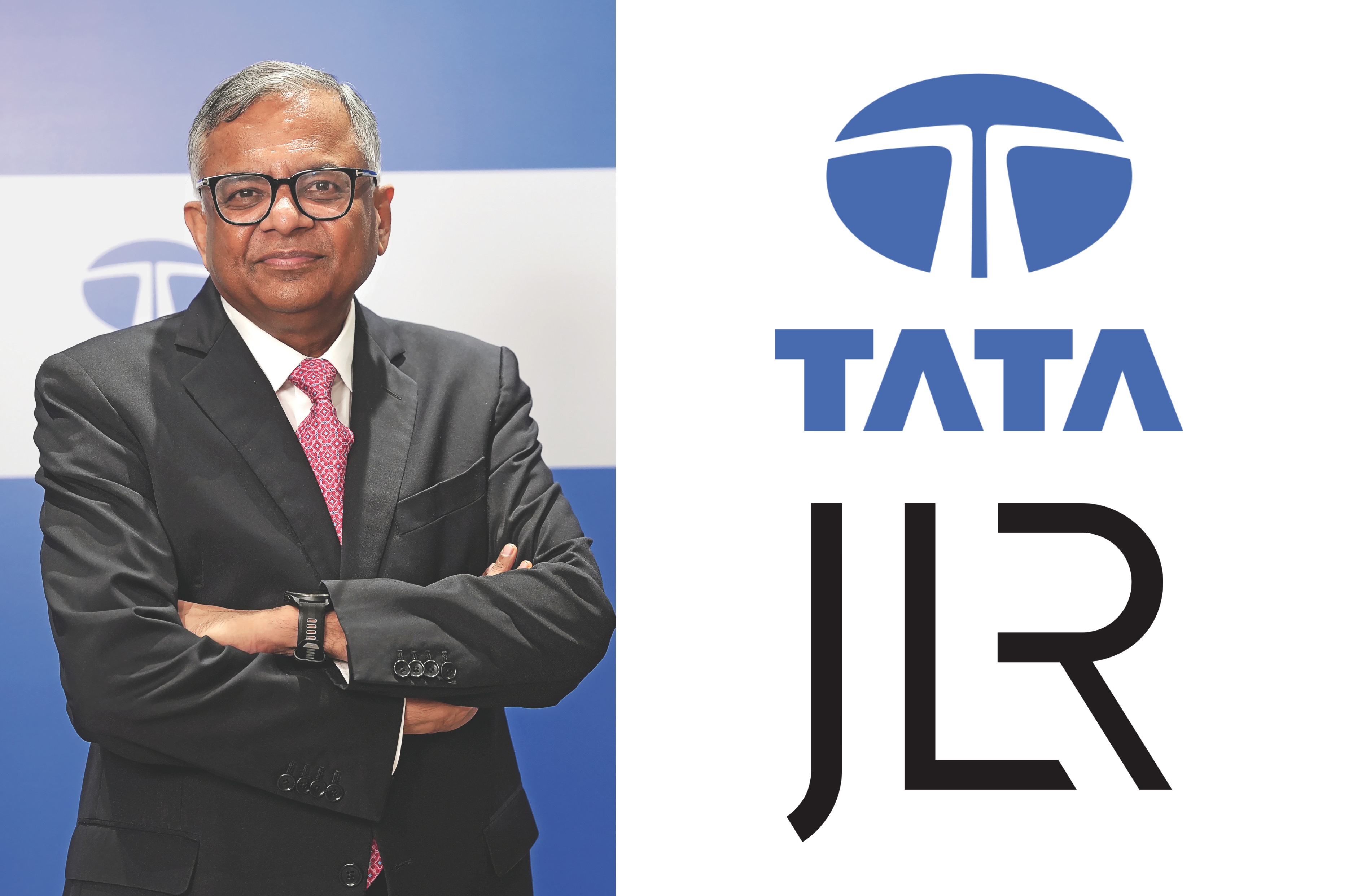After years of exploring synergies, Tata Group companies Tata Motors and Jaguar Land Rover (JLR) have finalised the plans to manufacture the latter’s electric vehicles in India for the global markets, marking a significant step in the history of the group’s car business, Natarajan Chandrasekaran, the chairman of Tata Sons, the holding company of all Tata Group firms, including Tata Motors, told Autocar India.
Referring to JLR’s Electrified Modular Architecture (EMA) platform, Chandrasekaran also said that in India, there would be two different models on this platform, one each from JLR and Tata Motors. “We will also be exporting [JLR cars] from Sanand,” he added.
The Sanand plant in Gujarat became an ideal choice, given that Tata Motors’ EMA-based Avinya car, which is likely to have global potential, will be made there.
“So, Tata Motors will talk about their exports in the next 12 months. We have bigger aspirations, let me put it that way, for JLR and Tata Motors,” he added without giving away any more details on what products are likely to be jointly produced on EMA.
India will become a key node for global manufacturing for JLR, with capacities in the UK, China, and East Europe already redefined with a strong focus on electric vehicles.
JLR manufacturing in India: Why Sanand makes sense
Chandrasekaran said he wants a culture of openness and innovation to explore possibilities. “We can bring the cost attitude of Tata Motors with the design and sophistication of JLR. If we can do that, we will be in a sweet spot. Then you get the benefit, accruing two different ways, and the volumes go up, which justifies the investment into the [EMA] platform.”
He said it may not be individually viable for Tata Motors to make that investment, and JLR volumes may not be enough, adding, “We are talking about not only the platforms but also the electric and electronic (E/E) architecture.”
Given the strong vertical integration emphasis to keep costs low, Sanand also becomes a default choice, given that the group’s battery-making facility, the Tata Agratas, is coming up in Gujarat.
The proximity to Mundra Port and key inputs, such as batteries made in Gujarat, add to the EMA platform’s competitiveness.
There is also speculation that Tata Motors is looking at setting up a plant specifically for JLR in Tamil Nadu, but the same has yet to be officially announced. In March, Tata Motors announced it signed an agreement with the Tamil Nadu government to “explore setting up of a vehicle manufacturing facility” that would entail a Rs 9,000 crore investment over five years, without specifying any details.
Heavy investments
Tata Motors, under Tata Passenger Electric Mobility (TPEM), has committed to investing over a couple of billion dollars in EVs until the end of the decade, and JLR has a defined capex roadmap of over 15 billion pounds or Rs 1.5 lakh crore in the next five years.
In November, TPEM and JLR, both 100 percent subsidiaries of Tata Motors, inked a pact for the licensing of the EMA platform for a royalty fee (including electrical architecture, electric drive unit, battery pack and manufacturing know-how) for the development of TPEM’s ‘premium pure electric’ vehicles series ‘Avinya’ on the said architecture.
TPEM and JLR were to enter into an Engineering Services Agreement to support TPEM’s change content requirements for the first vehicle development.
At the time the pact was signed, Tata Motors had announced, “JLR’s EMA platform will underpin its next generation of ‘pure electric’ mid-sized SUVs for international markets, launched from 2025 onwards.”
The company’s group CFO, PB Balaji, had said that this EMA architecture will be used for Tata Motors’ upcoming premium range of EVs, which will be based on the Avinya concept, which is not just a car but an architecture likely to spawn a family or range of EVs.
The ‘Avinya’ concept was first showcased in 2022 and is Tata Motors’ vision of how electric mobility for the future will be engineered to provide a class-leading in-cabin experience with generation-next connectivity, ADAS, performance, refinement and safety.
Access to JLR’s EMA platform will help accelerate TPEM’s entry into the high-end EV segment while reducing development cycle time and costs. JLR’s advanced E&E architecture can reach L2+ autonomy with all advanced connectivity, comfort and convenience features.
Further, it will accelerate TPEM’s adoption of Software over the Air (SOTA), Features over the Air (FOTA), safety (5 Star Euro NCAP Rating), and ultra-fast charging technologies for high-performance vehicles.
Also See:
EV sales in India decline 10 percent in August
Tata Punch is India’s bestselling car from January-July 2024

























